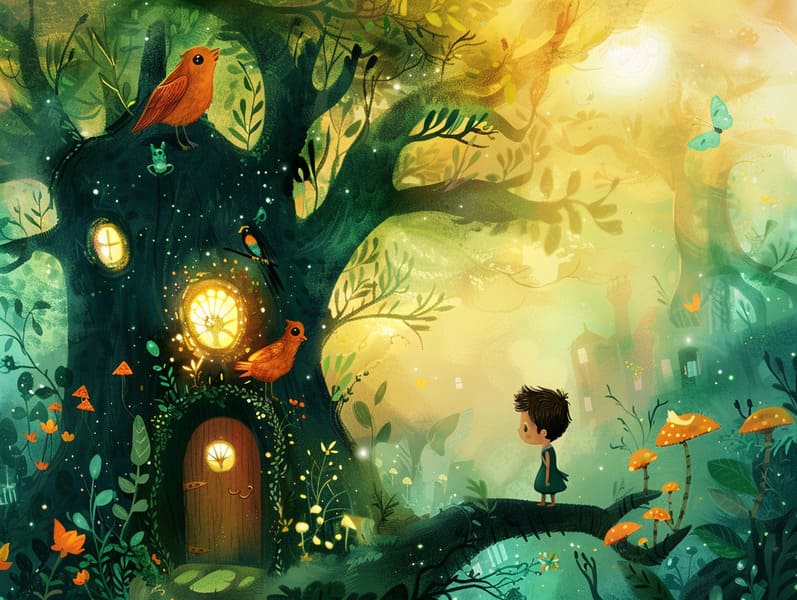The Start of Legendary Fairy Tales and Its Unwavering Attraction.
The Start of Legendary Fairy Tales and Its Unwavering Attraction.
Blog Article

Best fairy tales have deep roots. These stories have been told from one generation to the next long before they were ever transcribed. They emerged from a variety of civilizations, including Western traditions. They were initially disseminated among older generations, often carrying themes and messages related to the societal norms and beliefs of the time.
The renowned Brothers Grimm, the two Grimm brothers, were among the first to compile and publish many of these beloved tales. Their collection, "Grimm's Story Collection," included tales like "The Story of Cinderella," "Hansel and Grethel," and "The True Story of Snow White," which have since become essentials in the world of iconic fairy tales. Similarly, Hans Andersen's fanciful fairy tales, such as "The Mermaid's Tale," and "The Duckling that Could," have floated into hearts worldwide, securing their place in the pantheon of famous fairy tales.
Despite their historical roots, these tales remain as applicable as ever, especially as bedtime stories for kids. These fantastical tales are now available in many formats, including vibrantly illustrated books, enchanting animations, and online fairy tales.
Their continued relevance can be credited to several whimsical characteristics:
Vital Lessons: Classic fairy tales often present important moral lessons. Stories like "The Shepherd Boy and the Wolf" teach the virtue of integrity, while "The Race of the Tortoise and the Hare" illustrate the merits of determination and unpretentiousness. These stories offer young readers clear distinctions between virtue and vice, developing their moral compass in a tender yet important way.
Compassion and Knowledge: Classic fairy tales frequently depict heroines facing tests and troubles, prompting readers to empathize with their struggles and root for their triumphs. For instance, "Beauty and Her Beast" illustrates the merit of seeing inner beauty to understand the inner being of a being, strengthening compassion and understanding.
Cultural Insights: Many traditional fairy tales are imbued with the cultural contexts from which they bloomed. Learning from these tales can provide captivating looks into different societies, cultivating a sense of global understanding and comprehension.
Imagination and Creativity: The supernatural elements in traditional fairy tales—magical beings—fuel children’s dreams. These fairy tales take readers to enchanted realms, invigorating inventive dreams and a sense of awe that persists a lifetime.
Ancient fairy tales are not only delightful but also educational. They work as captivating tools in developing various brain and heart skills in the young. When traditional fairy tales are recited, they boost linguistic abilities by bringing new terms and meanings and intricate sentence structures. This practice also advances listening abilities and mental focus, as little ones keep up with the story, anticipating to see what happens next.
Furthermore, deliberating the themes and characters of traditional fairy tales can cultivate cognitive skills and logical thinking. Little ones are taught to discover patterns, predict happenings, and grasp cause and effect. These conversations also support young ones convey their thoughts and feelings, fostering their emotional intelligence.
In today’s digital era, the presence of free fairy tales online has made these tales more accessible than ever. Digital sites and applications offer extensive collections of children's fairy tales that can be explored or listened via anytime, anywhere. Fairy tales recited are particularly in demand, offering an interactive way for young ones to experience these enchanting tales. Narrated books and read-aloud videos carry characters and settings to life, often supported by enchanting musical scores and soundtracks that raise the narrative journey.
The timeless fascination of traditional fairy tales lies in their ability to evolve to modern times while staying true to their key morals. Contemporary versions of these tales often integrate more multicultural characters and modern settings, making them meaningful to today’s audience. However, the central morals of bravery, benevolence, and truth remain unchanged, continuing to influence young listeners of all ages.
Fairy tales also offer a sense of reassurance and understanding. They allow a methodical narrative with a straightforward beginning, middle, and end, often drawing to a close with the culmination of conflicts and the triumph of good over bad. This consistency can be solacing for the young, bringing a sense of firmness in an always shifting world.
Ancient fairy tales continue to captivate and coach new generations, maintaining their attraction and importance in modern society. As children's night stories, they bestow a perfect blend of delight and instruction, cultivating moral values, empathy, and creativity. The abundance of online storybooks and the favor click here of fairy tales recited guarantee that these classic tales remain acquirable to new generations.
By defending and circulating these fairy tales, we continue to cherish the rich tapestry of lore and cultural heritage. Whether you are viewing a vibrantly illustrated book, discovering a cyber library, or hearing an audio story, the delight of bedtime fairy tales is always within reach. These narratives illustrate of the eternal magic of stories and its ability to bring us together across epochs and places.
Regardless if you are enjoying a vibrantly illustrated book, browsing a online library, or listening via an voice book, the grandeur of famous fairy tales is always within reach.
These narratives show us of the perpetual strength of fairy tales and its ability to unify us across epochs and places, weaving a spell that enchants and educates alike.